- Joined
- Nov 2, 2008
- Messages
- 22,046
The foot doesn't really need to pivot(or as much) if pointed more targetward.Yes. For me it is an easy reminder for crush the can. Can't rotate on the heel if the foot lands toe to target (horse stance).
Discover new ways to elevate your game with the updated DGCourseReview app!
It's entirely free and enhanced with features shaped by user feedback to ensure your best experience on the course. (App Store or Google Play)
The foot doesn't really need to pivot(or as much) if pointed more targetward.Yes. For me it is an easy reminder for crush the can. Can't rotate on the heel if the foot lands toe to target (horse stance).
The foot doesn't really need to pivot(or as much) if pointed more targetward.
It's all good as long you can still shift from behind. I think it's just harder to learn it being more open, so Crush the Can like most drills exaggerates things to help Feel the shift/catch from behind.Kyle Klein opens up his front foot/leg more than other pros (on some shots at least) and still crushes.
I wouldn't recommend it as it might complicate a few things, but it's interesting.
It's all good as long you can still shift from behind. I think it's just harder to learn it being more open, so Crush the Can like most drills exaggerates things to help Feel the shift/catch from behind.
Crazy watching his arm roll under in the followthru.
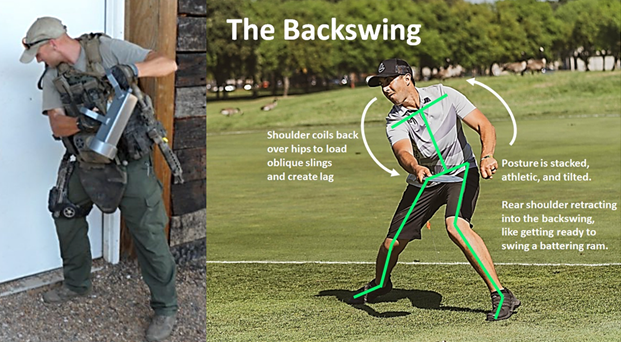
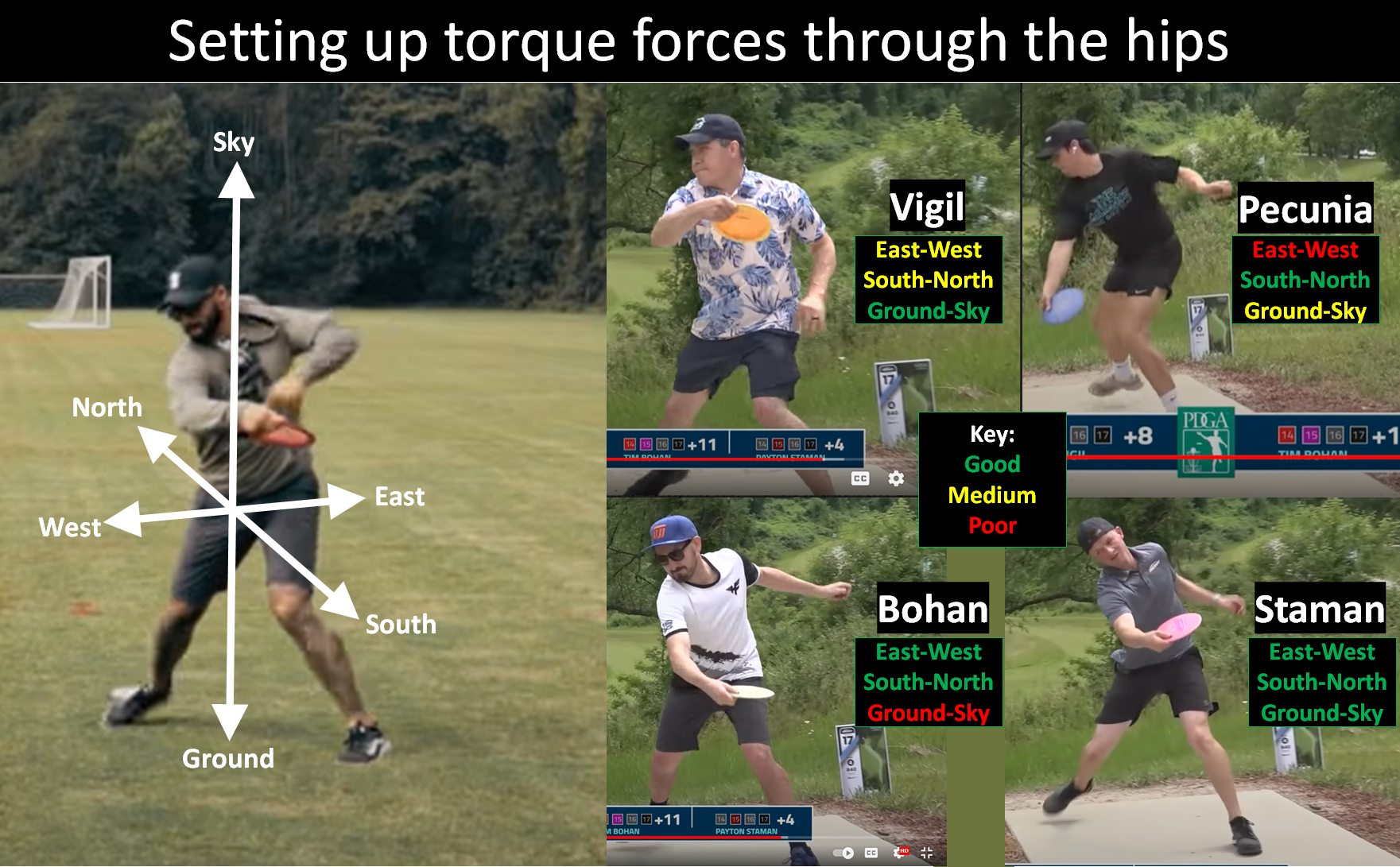
Probably a poor hole choice to study with the massive downhill.I've become very interested in what separates good from very good form among 900+ rated, but not necessarily top players. Socradeez got me looking at a video of players and I realized it was a good example emphasizing the principal axes and orientation that the hips should be. The players (& ratings) are:
Staman: 997
Pecunia: 958
Bohan: 953
Vigil: 929
I clipped comparable shots of their hips in transition from here.

When I look around, very good (e.g., ~1000 rated plus) players who crush all tend to be more likely to end up with the hips in transition like Staman, who could perhaps nudge a thing around here and there such as his rear foot angle, but for the most part gets a process like Gibson on the left. You can see based on the image above that each of the lower-ranked players there have some relative deficiency in their east-west process (including stagger), south-north process (including stride length & orientation of the butt backswing to swing, and ground-sky process (elevation of rear hip to front hip). It looks like top form tends to converge on this balance between these processes to maximize what you get out of vertical, horizontal, and torque forces regardless of other details of the form. Maybe it's a little easier for Staman to achieve his very nice-looking action there due to his body type, I don't know.
Probably a poor hole choice to study with the massive downhill.
Pecunia is throwing a big hyzer while the others are throwing anhyzer so the stagger only appears to bad.
Stamon goes over top, not quite "pro form" IMO, but he still throws decently far.
All four of them have both body slant away from target and shoulder tilt with throwing shoulder much lower in the backswing. (this is something I was looking for because even though my shoulders feel tilted the video proves otherwise)
But this is true for both hyzer and anhyzer angles. That's confusing.
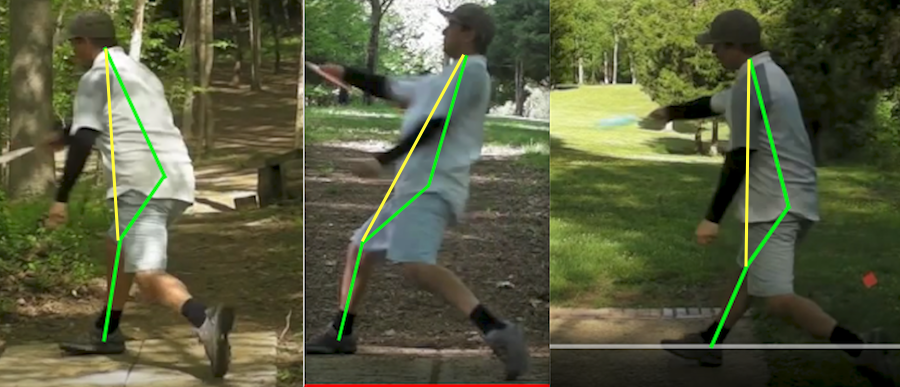
I don't know how correlated rating in the 950-999 range corresponds to form. In general compared to lower rated players they are rated as such not necessarily of their form but because of:
#1 with a bullet) They are making more putts
2) Regardless of the efficiency/power of their form they are generally hitting their lines/not shanking shots
3) Making dumb mistakes less often
4) They are able to execute increasingly more difficult shot shapes in order to put themselves in a position to score
The difference between a 1000 rated player and a 1020 rated touring pro, however, is night and day and at that level you do see great form consistently. I think a better correlation is the progression in form wrt distance: To reach 400ft max distance you can kinda throw however you like you can round, squash the bug etc. To reach 500ft you can have some pieces right and some pieces wrong if you're generally athletic. But not a single person throwing 600ft is doing so by rounding/squashing the bug/having sloppy form. There are of course ams with great form but lower rated due to deficiencies in other parts of their game.
I think I can answer this:
You may be emphasizing something else, but in general I think you want the posture to maintain internal consistency regardless of the line and angle.
His posture will load similarly in the backswing for each type of throw, but he adjusts how he rocks & shifts into the plant to hit different angles and lines.
img source
Yes, that's what I meant. It looks like good throwers have a distinct shoulder tilt in the backswing, maybe 30 to 40 degrees, with the throwing shoulder lower.
It also looks like good throwers also have the same shoulder tilt on the follow through as well, with of course the throwing shoulder higher. Here's a recent image:

That suggests that that consistent tilt defines a plane on which the shoulders rotate. If I watch from behind, it does not appear that the disc follows a similar plane, either that one or a parallel one below it. It actually appears that the disc moves mostly horizontally though that may be camera angle or my misperception.
For ball golfers it looks to me like the hands do parallel the shoulder plane, below it somewhat.
I think I can answer this:
You may be emphasizing something else, but in general I think you want the posture to maintain internal consistency regardless of the line and angle. E.g., here's Simon on hyzer, anhyzer, and baby hyzer:

His posture will load similarly in the backswing for each type of throw, but he adjusts how he rocks & shifts into the plant to hit different angles and lines.
img source
I don't know how correlated rating in the 950-999 range corresponds to form. In general compared to lower rated players they are rated as such not necessarily of their form but because of:
#1 with a bullet) They are making more putts
2) Regardless of the efficiency/power of their form they are generally hitting their lines/not shanking shots
3) Making dumb mistakes less often
4) They are able to execute increasingly more difficult shot shapes in order to put themselves in a position to score
The difference between a 1000 rated player and a 1020 rated touring pro, however, is night and day and at that level you do see great form consistently. I think a better correlation is the progression in form wrt distance: To reach 400ft max distance you can kinda throw however you like you can round, squash the bug etc. To reach 500ft you can have some pieces right and some pieces wrong if you're generally athletic. But not a single person throwing 600ft is doing so by rounding/squashing the bug/having sloppy form. There are of course ams with great form but lower rated due to deficiencies in other parts of their game.
Yes, that's what I meant. It looks like good throwers have a distinct shoulder tilt in the backswing, maybe 30 to 40 degrees, with the throwing shoulder lower.
It also looks like good throwers also have the same shoulder tilt on the follow through as well, with of course the throwing shoulder higher. Here's a recent image:

That suggests that that consistent tilt defines a plane on which the shoulders rotate. If I watch from behind, it does not appear that the disc follows a similar plane, either that one or a parallel one below it. It actually appears that the disc moves mostly horizontally though that may be camera angle or my misperception.
For ball golfers it looks to me like the hands do parallel the shoulder plane, below it somewhat.
I think I can answer this:
You may be emphasizing something else, but in general I think you want the posture to maintain internal consistency regardless of the line and angle. E.g., here's Simon on hyzer, anhyzer, and baby hyzer:

His posture will load similarly in the backswing for each type of throw, but he adjusts how he rocks & shifts into the plant to hit different angles and lines.
img source
FYI it's Steve, not Simon although they do look somewhat similar. And Steve is throwing a roller there, but it's really still just a more severe anhyzer.Feldberg touches on this with his big thing on footwork and it doesn't get much traction.
The middle frame there, Simon is throwing a roller.
So, if were to talk about Feldberg Technique when it comes to the feet, were going to move our feet around in the shot to help our body get out of the way and do what we need to do.
For a really really hard hyzer spike, you would step more inside, and for annies and rollers, you'll step more outside. Because you need to lean back on the annie/roller line like that, you need to let your body rotate onto the line, if you step to inside. Ehh, I dont feel like I can explain it really well.
You can clearly see that he's changed his plant as explained to a much wider plant to allow the hips and shoulders to change angles into the harder line.
The biggest issue with a lot of the stuff that we do is that the camera isn't always in line with the shot direction, so we dont get a huge feel for the little footwork that goes on.
And footwork is important. I think a bit more than we give it credit for.
Kind of, but there is shot shaping.The follow through, in theory, should follow the disc angle of release. if we try and change that, we are putting Off axis torque on the disc and wasting muscle use.
FYI it's Steve, not Simon although they do look somewhat similar. And Steve is throwing a roller there, but it's really still just a more severe anhyzer.
Kind of, but there is shot shaping.
My best throws, I feel the disc pull me(my Cog in perfect balance) into the followthru straight down the trajectory.
FYI it's Steve, not Simon although they do look somewhat similar. And Steve is throwing a roller there, but it's really still just a more severe anhyzer.
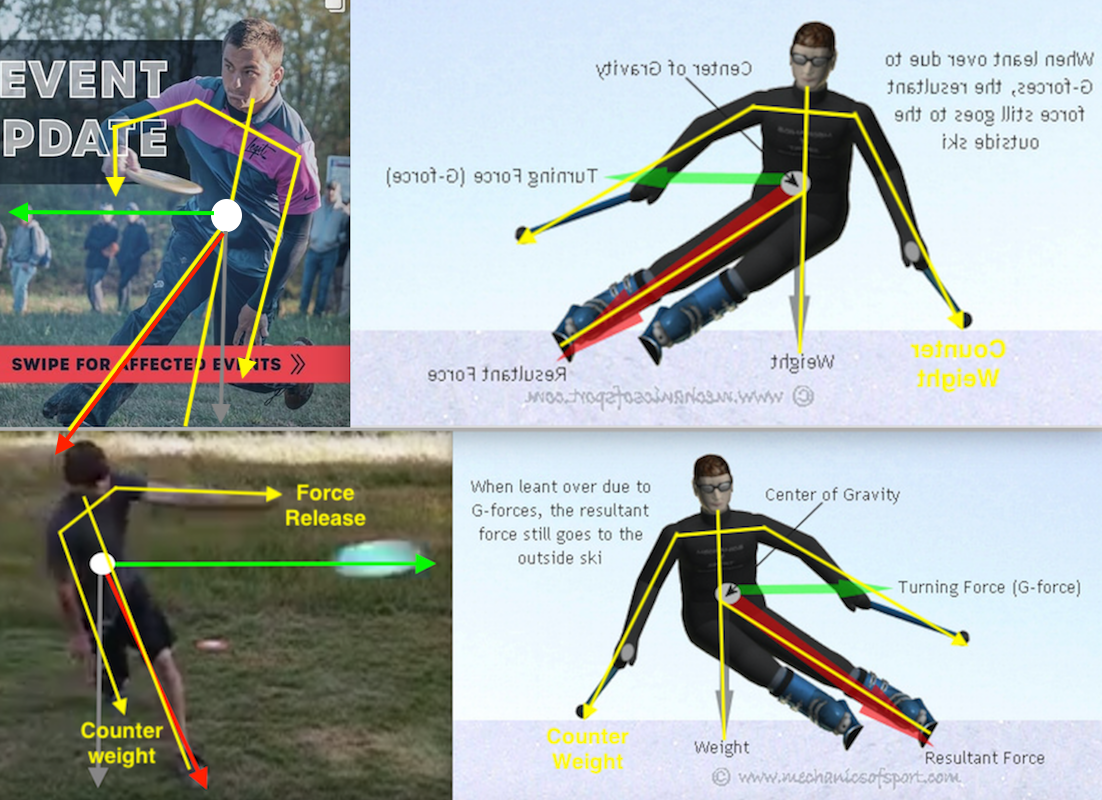
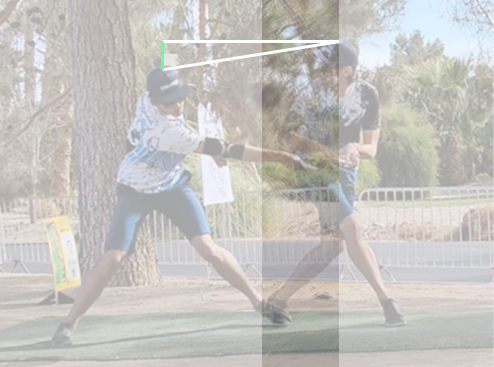
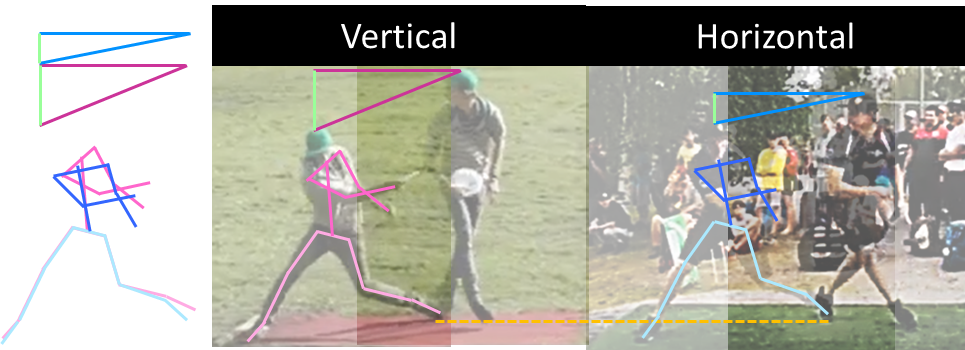
I don't know how correlated rating in the 950-999 range corresponds to form. In general compared to lower rated players they are rated as such not necessarily of their form but because of:
#1 with a bullet) They are making more putts
2) Regardless of the efficiency/power of their form they are generally hitting their lines/not shanking shots
3) Making dumb mistakes less often
4) They are able to execute increasingly more difficult shot shapes in order to put themselves in a position to score
The difference between a 1000 rated player and a 1020 rated touring pro, however, is night and day and at that level you do see great form consistently. I think a better correlation is the progression in form wrt distance: To reach 400ft max distance you can kinda throw however you like you can round, squash the bug etc. To reach 500ft you can have some pieces right and some pieces wrong if you're generally athletic. But not a single person throwing 600ft is doing so by rounding/squashing the bug/having sloppy form. There are of course ams with great form but lower rated due to deficiencies in other parts of their game.